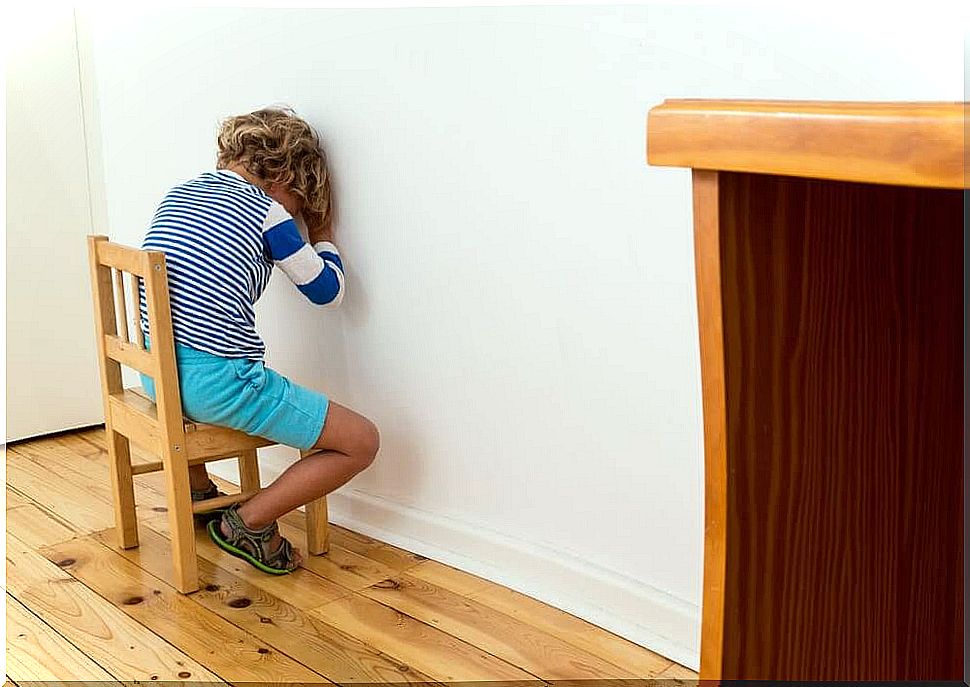5 Alternatives To Punishment
Good communication supports positive behavior in children. Before you think about punishment, it would be better to find a way to talk about the problem. So you can find a solution together. Read this article that aims to help you raise children.

Did you know that punishment is n’t always the only way your child learns their lesson? There are also alternative forms of upbringing that enable the child to develop better.
Do you remember how you felt when mom or dad yelled at you for not putting away your toys? Or did you get beatings in your childhood?
Your child will feel just like you did when you punished them with verbal aggression.
Even if you just want to change one of your child’s wrong behaviors, punishment will only humiliate them.
Such a strategy will never teach them what kind of positive behavior you are trying to teach them. It then only wants to do things through which it can avoid punishment and thus learns to use violence itself as a means of resolving conflicts.
What are the best alternatives to punishment?
One of the best alternatives to improve our child’s behavior is through conversation. But sometimes that’s just not enough.
Educational alternatives should then be considered that use positive empowerment to teach the child why their behavior is inappropriate. This lays the foundation for changing behavior.

Some textbooks recommend other types of punishment, such as disenfranchisement.
However, these punishments convey the same message as screaming or hitting. Really effective alternatives to punishment are those that allow the child to learn from their mistakes and grow in healthy ways.
Positive discipline is a useful way to improve parent-child relationships. Their foundations are mutual affection and respect.
Of course, you shouldn’t give in to your child’s every whim, but neither is it about being too authoritarian. You should be steadfast, but consider your child’s feelings and needs and yourself.
1. Talk to your child about the problem
Many parents cannot argue with their children without arguing. This often happens when the children need help but don’t want to talk to their parents.
An alternative to punishment is to listen to your child and let them speak. Don’t say you know how it feels
Many conversations end because parents intervene too early, when the child does not feel that they have expressed their point of view.
Even if you think you know what’s going on in your child’s mind, show an interest in what they’re telling you. This makes them feel safe and ready to explain to you what happened.
Once your child opens up to you, you can look for a solution to the problem together.
2. Explain to your child the consequences of their behavior
It is well known that the sound makes the music. If you give your child sentences like “If you do this, you will be sorry!” say then it will just be afraid and have no respect for you.
You don’t teach him which behaviors to change and how.
Talk to your child. Explain to him that his behavior has consequences. Let them understand that these consequences can affect those around them.

You should be steadfast and direct, but always remain friendly. Also praise your child when they behave correctly, so they learn to go the right way. Do a family activity together to reward yourself.
3. Give your child more housework
One of the alternatives to punishment is to give the child more household chores if they are not behaving correctly. This allows you to exercise discipline without raising your voice.
4. Ask them to apologize
You’ve probably got your child to say “Sorry” before. But have you ever thought of the real power of that word?
Immediate apologies are sometimes not the best way to act because they are often empty.
Your child needs to think about their behavior and the conflict first. Give them some time to digest everything so that they understand how their behavior affects other people’s feelings.
Once they have calmed down, talk to each other about what happened and ask them to think about others too. Maybe it hurt her.
When there is some time to ponder first, you’ll be amazed at how quickly an apology comes out naturally. That is then also much more honest than the required immediate apology.
5. Give them different options and let them choose how to pay for their bad behavior
Depending on the degree of his behavior, you can choose different alternatives to the punishment. Then give your child time to think about and choose what role they want to do.
Maybe it’s about less time with electronic devices or more household chores.
Imposing punishment on your child will only make them feel frustrated and may even feel resentment and anger against you.
However, if you calmly explain the consequences of their behavior to them, they will be able to understand how they can act more appropriately the next time.
Closing remarks
Punishments contain negative consequences that all parents should avoid. This is how you teach your child to punish others. Do you really think that taking away the computer or the dessert will do him any good?
It is likely that this will teach your child to take their frustrations out on others as well.
Furthermore, guilt is created by punishment. Most of the time, children are punished for crying.
However, you should have time to think about what you actually did wrong first.
This allows the child to quickly learn that their parents will forgive them and love them again, even if they have done something wrong and are sad or frustrated because of it.









